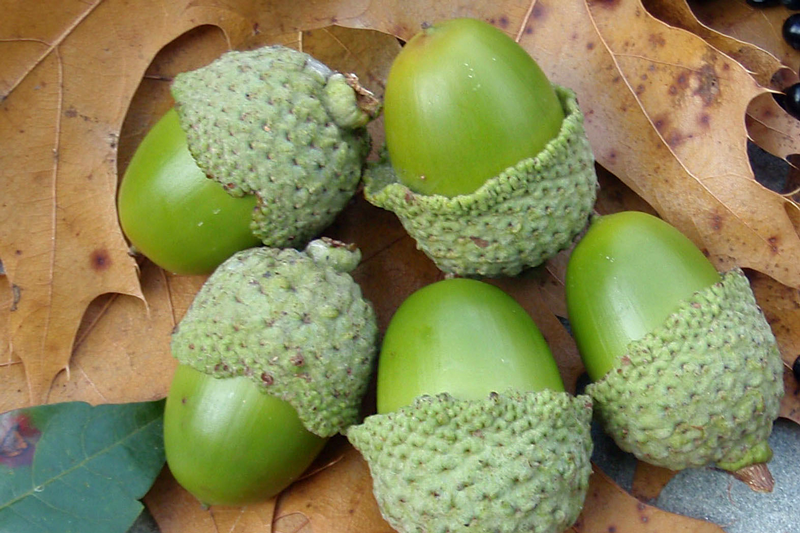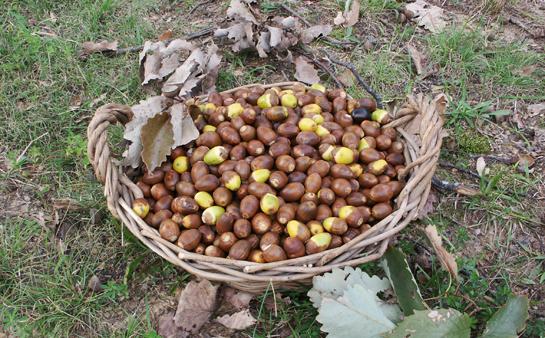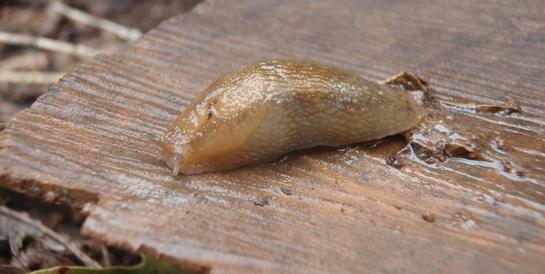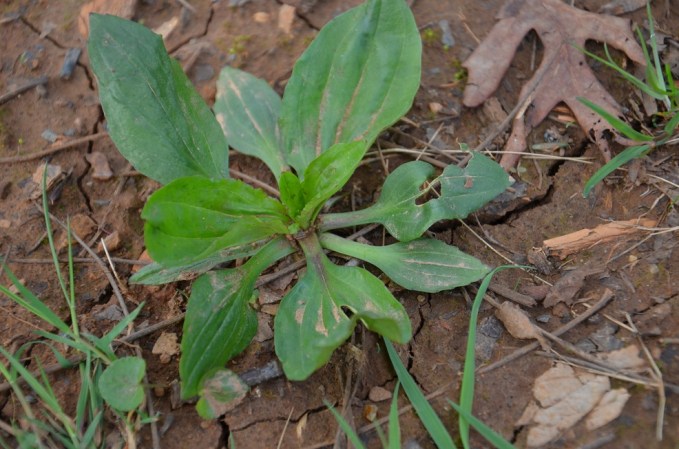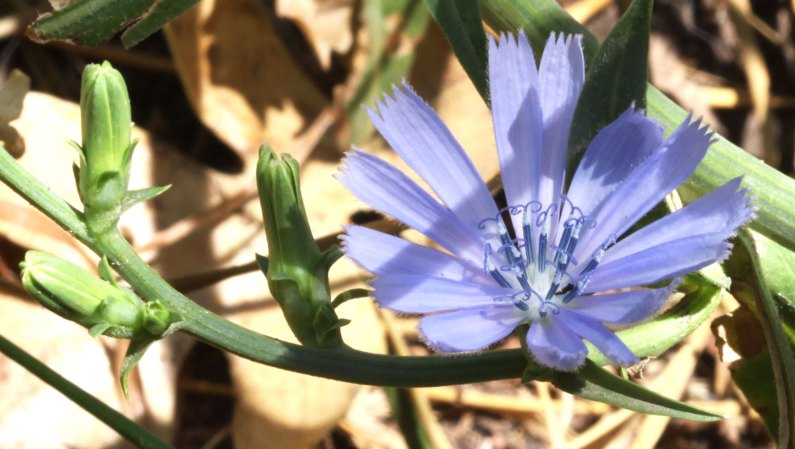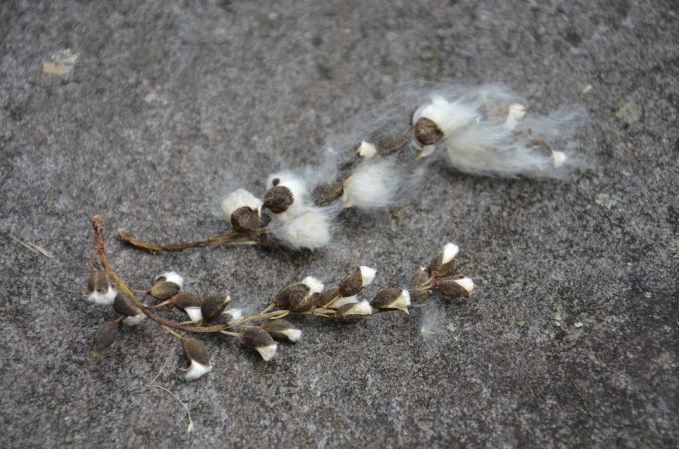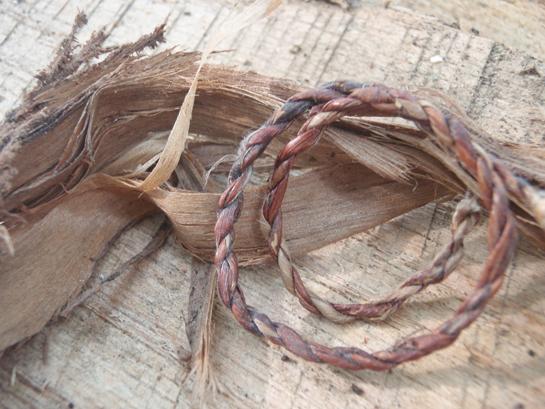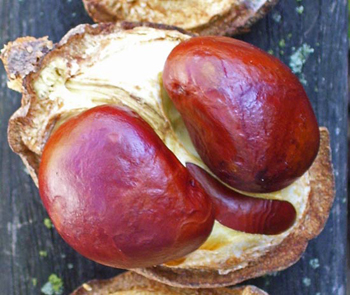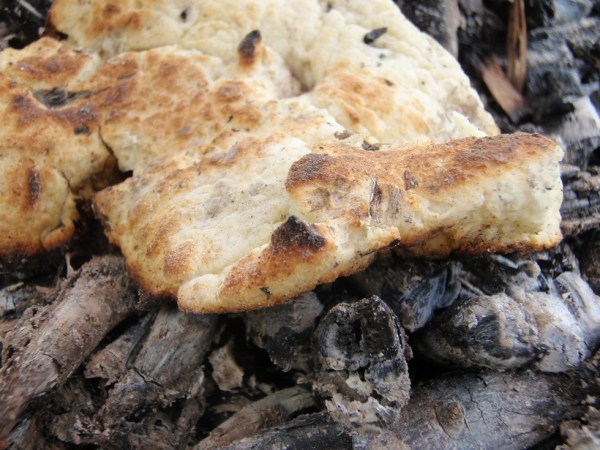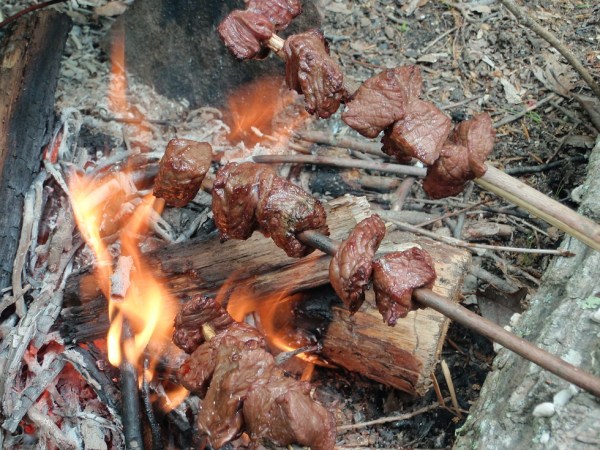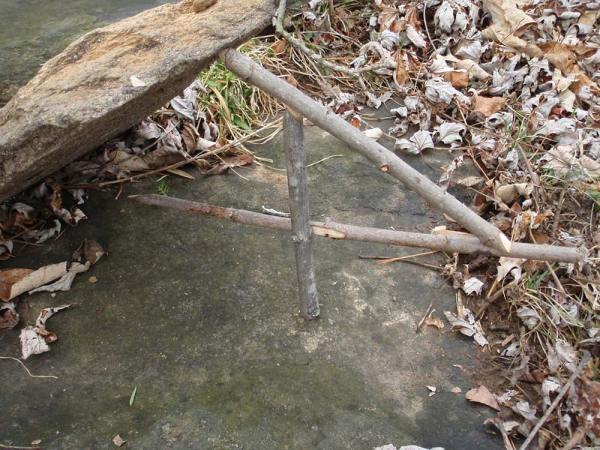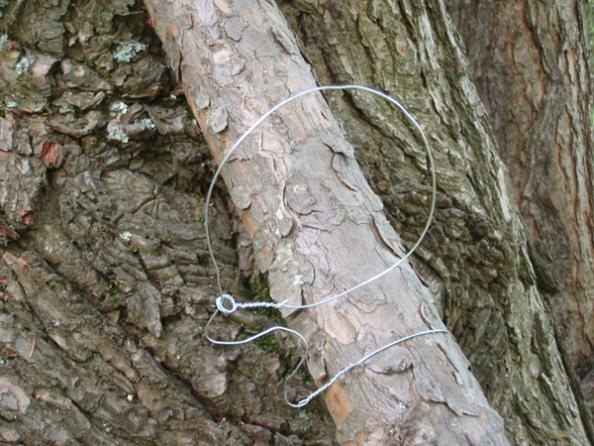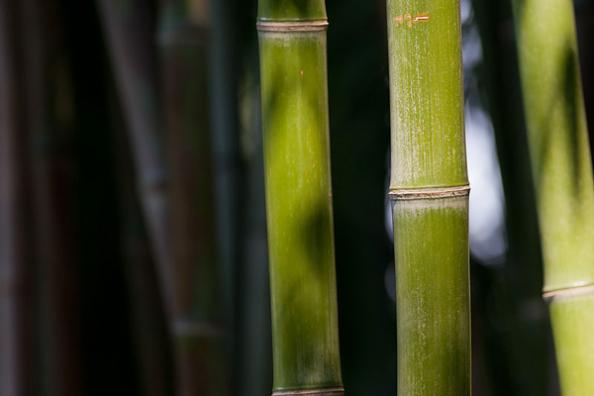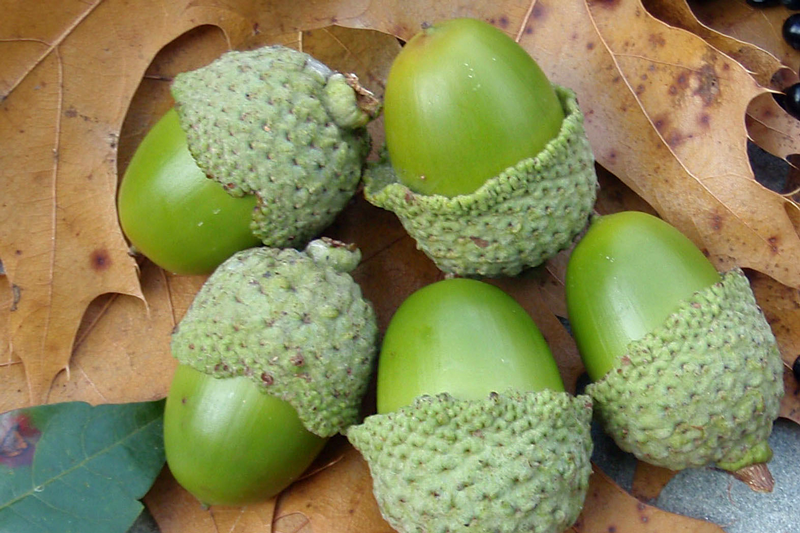
“I didn’t know you could eat acorns!” It pains me to hear this phrase, and I hear it often. It seems that the average person has no idea they are crushing a valuable wild edibles underfoot. Many areas with oak trees are loaded with acorns this year, so it’s proving to be a great year to harvest this wholesome native food.
But what are you supposed to do with them? Here’s an easy method for processing them, and five different ways to eat this humble and ubiquitous tree nut.
Processing acorns starts out by shelling of the nuts and leaching out the tannins that make them bitter and nauseating. You could crack them one by one with pliers or smash them individually with a rock, but the native folks of this land figured out a much better technique: mass breakage.
Simply set out 20-30 acorns on a hard flat surface and smash them all at once with a wide heavy object. Use a sidewalk and a cinderblock in urban environments. Use two big flat rocks in your back yard or in the wild. Whichever “tools” you have at your disposal, you can smash the nuts open in one or two strokes and save yourself a lot of time.
Next, separate out all the shell fragments and place the nut meat pieces in pot of warm water. Soak them in warm water for a few hours, then pour off the water. Do a taste test. If the acorns are still too bitter, soak them in warm water for a few more hours. This water bath leaches out the tannic acid, which causes nausea and digestive distress when consumed. Repeat this until they are palatable. For ideas on what to do with the leftover tannic acid, click here.
You could also do a leaching process in moving water with a cloth bag. Clean socks or pillow cases are great, if you have them. Tightly woven baskets are the traditional method of straining them. Immerse the nuts in a running stream and secure them so they don’t wash away. Let the water flow through them for a few days, and you’re ready to move to the next step.
Once the acorns are properly leached, they can be dried a bit to grind into flour, or used while the chunks are still damp.
1. Roasted Acorns
One of the easiest ways to cook acorns is to roast them. Place the damp nut chunks on a baking sheet and sprinkle with fine salt. Toast them for 15-20 minutes at 375 degrees in a pre-heated oven, or roll them around in a dry frying pan over the camp fire. You can tell they’re done when the color has changed a little, and the nut pieces smell like roasted nuts. Eat them out of hand just like peanuts.
2. Acorn Brittle
For those with a sweet tooth, follow your favorite peanut brittle recipe, and substitute acorns for the peanuts. Use the same volume of acorns that the recipe asks for in peanuts, or add a few more acorns to make this snack a little more nutritious. Once the brittle is cooled, break it into pieces and enjoy.
3. Acorn Bread
Dry your leached acorns a little bit. When they are halfway between wet and soft, and dry and rock-hard, run them through a blender, food processor, grain mill, or grind between two rocks. Dry the resulting acorn meal in a low temp oven for a few minutes, or air dry for a few hours. Then grind it again. This acorn flour can be used to bake breads or almost any other baked good. If you’re expecting soft spongy bread, blend in some wheat flour for its gluten. It you don’t mind the acorn’s natural crumbly texture, use the acorn flour as-is.
4. Acorn Cookies
Using the flour described above, try your hand at cookies. You could follow any cookie recipe, swapping out the wheat flour for acorn flour. Since acorn flour is more crumbly than wheat flour, cookies are a natural fit for this wild food. My favorite are acorn peanut butter cookies. Here’s how to make them:
Ingredients
3 cups of acorn flour
½ teaspoon of baking soda
½ teaspoon of salt
2 eggs
2 teaspoons of vanilla extract
1 cup of white sugar
1 cup of butter
1 cup of brown sugar
1 cup of peanut butter
The butter will cooperate better if it softens up to room temperature before mixing, so set the butter out first. Mix the flour, salt and baking soda in a small bowl, and set it aside. Mix the softened butter and peanut butter in a large bowl. Add the vanilla and both sugars to the butter mixture, and mix it well. Add the eggs and mix again. Stir the flour mixture into the butter mixture until smooth. Roll the dough into balls and pat out onto an ungreased baking pan. Bake at 375 degrees for 10 minutes or until lightly brown. Makes 4 to 5 dozen cookies.
5. Acorn Coffee
This may not seem right to diehard java drinkers since there’s no caffeine in an acorn, but you can roast a coffee substitute from acorns that is pleasant enough to drink. Place chunks of leached acorn on a cookie sheet and roast them in the oven at 400F for about 30 minutes. This roasting time will depend on the moisture in the nut pieces (more moist acorns need more time). Trust your eyes and nose when making acorn coffee, and stay right next to the oven. When the pieces are dark brown and give off a roasted (but not a burned) smell, they are done. Add one tablespoon of roasted acorn to one eight ounce cup of boiling water. Steep for 5-10 minutes, reheat if necessary. Add your normal coffee additives, or drink it “black.”
What do you make from acorns? Let us know you use them by leaving a comment.
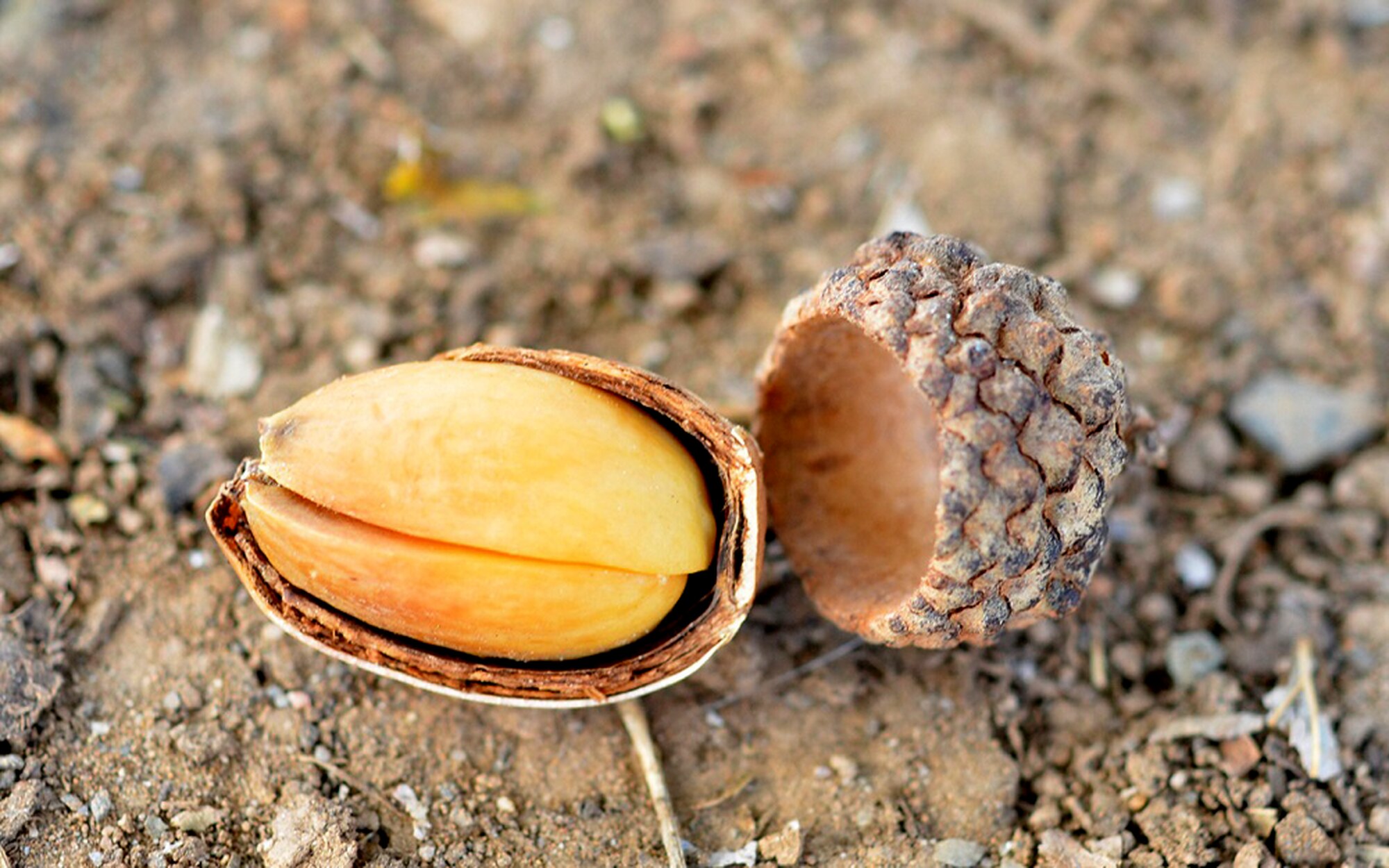
How to Prepare Acorns for Food and Medicinal Uses
Acorns represent one of the biggest (and most widespread) calorie jackpots in the annual wild plant food harvest, if you can beat the squirrels to them. These high calorie nuts were a staple crop to many of our ancestors around the Northern Hemisphere and we can still rely on them for food today. Coming in at 2,000 calories per pound, this abundant of a food crop is too valuable to ignore. You can even use them to make medicine. Here’s how.
Acorns for Food
To prepare palatable acorns, crack them out of their shell and break any large pieces into “pea-sized” chunks. Then soak these acorn chunks in cold, warm, or even hot water to remove the bitter and irritating tannic acid. Note that some books instruct us to boil acorns, but this locks in some of the bitterness. You’ll have the best results with warm water.
Soak the acorns for a few hours. If the water was safe to drink, taste a piece of acorn to see if it is still bitter. If you don’t like it, dump off the water (which should be brown, like tea), add fresh warm water, and soak the acorn pieces again for a few hours. Repeat this a time or two, or three depending on the acorn’s bitterness. Once they taste okay (in other words, bland), let them dry out for a few hours. Then you can run them through a grain grinder, flour mill, or use the classic mortar and pestle to make acorn flour. Add this flour to existing recipes; or try your hand at making acorn porridge, cookies, crackers, or biscuits.
Acorns for Medicine
Remember the brown tea-like water you poured off the first soaking of acorns? Well, don’t throw it out just yet. Even though it seems like we’re brewing up some kind of medieval potion, crushed acorns and hot water can provide a great remedy for inflamed and irritated skin, as well as toothaches. You can use the first water you pour off from the process of soaking described above. Or you can make a liquid that’s more concentrated by boiling crushed acorns (shells and all) in a pot of water. A handful of crushed acorns in one pint of water will make a small batch of strong medicinal fluid. Soak a clean cloth in this dark brown water, and apply the wet cloth to rashes, ingrown toenails, hemorrhoids, and any other inflamed skin ailment. Leave the cloth in place, and repeat this treatment as needed. For tooth troubles, simply swish the bitter water in your mouth, holding it in there as long as you can. Repeat as need, but do not swallow, as this acidic water will give you an upset stomach.
Ever try to eat acorns without leeching the bitterness? Or perhaps used them as a flour or animal feed? Please tell us about your experience in the comments.
11 Things You Never Knew About the Incredible, Edible Acorn
Deer and hunters alike often find themselves at the mercy of this modest nut. A poor acorn year can spell disaster for a herd headed into a hard winter, just as a bumper crop can ruin even the best hunt plan. Here’s everything you never knew about the hard mast that packs a real punch.
450-600
Number of oak species that exist worldwide (depending on how they’re classified)
60
Approximate number of oak species in the U.S.
5.5
Pounds of food a deer consumes per day, on average
55%
Portion of a whitetail’s fall diet that consists of mast like acorns
74%
Acorns a gray squirrel may hide but never recover
Protein should make up 16% of a buck’s diet for its antlers to reach maximum growth
>10,000
Number of acorns a single oak tree can drop in a good year
6 months
Time it takes acorns from the white oak family to mature
18 months
Time it takes acorns from the red oak family to mature
One Pennsylvania study measured how many acorns a stand of red oaks could produce. In a poor seed year researchers tallied just 7,000 acorns per acre. but during a bumper year, they recorded 273,000. That’s a lot of nuts.
NUTRITION FACTS
(SERVING SIZE: 1 oz.)
110 calories
7 grams fat
12 grams carbohydrates
1.7 grams protein
